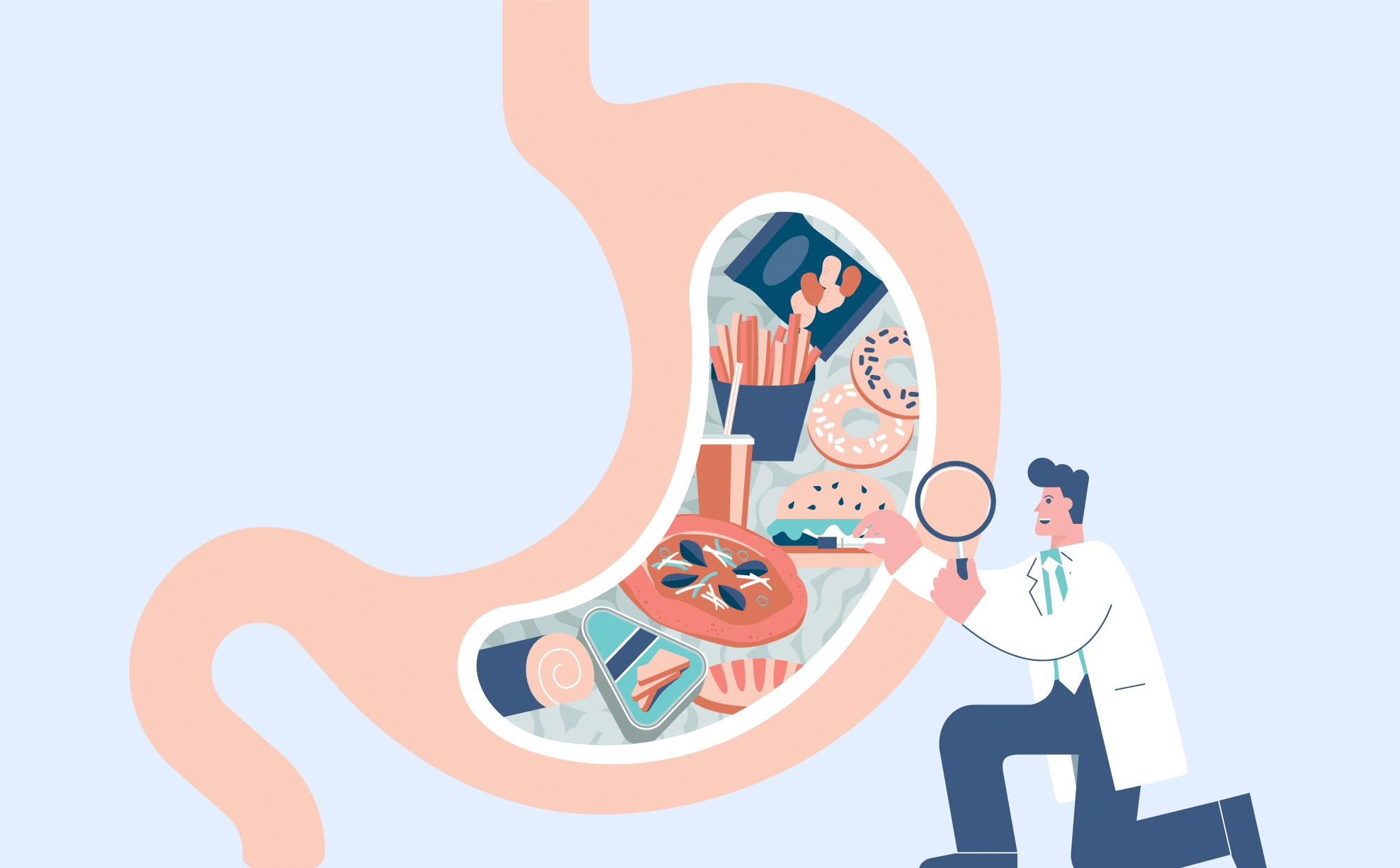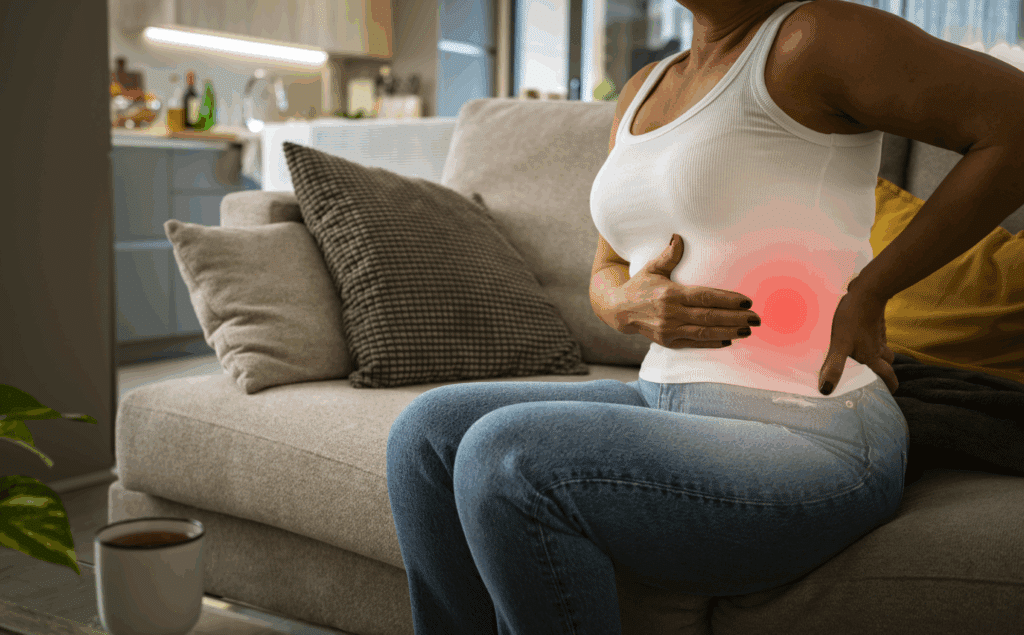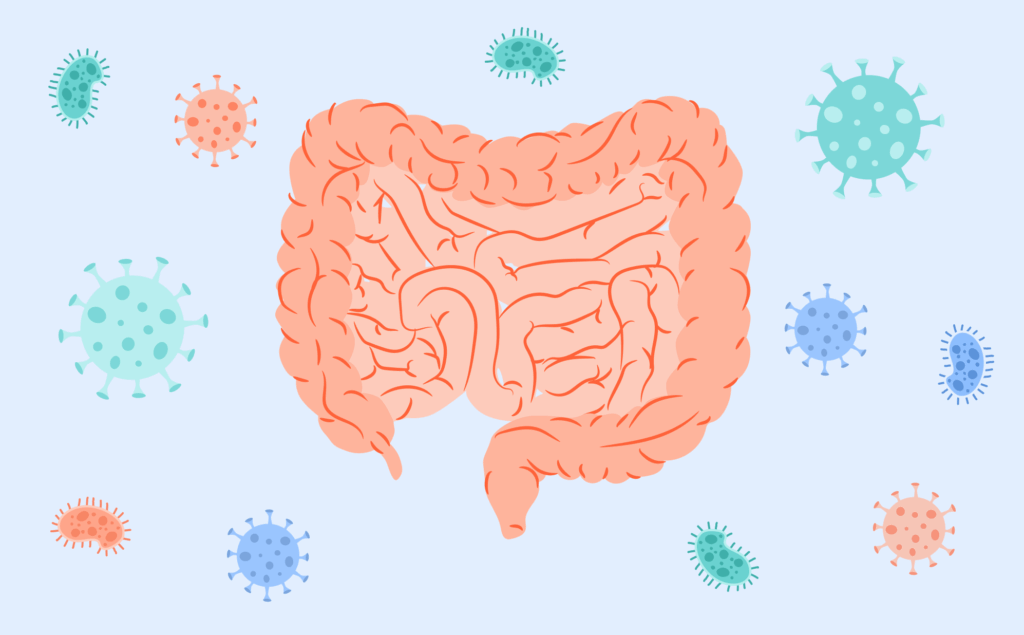Gastritis, or inflammation of the stomach lining, may cause stomach pain, nausea, and bloating, and other symptoms that can make eating uncomfortable. But that doesn’t mean this gastrointestinal (GI) condition should be a reason to skip meals. Instead, consider it an invitation to try out a gastritis diet. Here are foods to eat and avoid, as well as other dietary guidelines to follow, if you’re dealing with gastritis.
There’s a lot that researchers still need to figure out about gastritis, a GI condition that causes inflammation in the stomach lining. But one thing we do know? Your diet won’t cause gastritis. That said, certain foods can and do aggravate symptoms—meanwhile, others can actually work to soothe inflammation in your stomach lining.
A gastritis diet can help you add foods that soothe symptoms to your plate and learn which foods to avoid. Ahead, we’ll discuss how to find an appropriate dietary approach to manage symptoms and boost overall gut health.
What is gastritis?
Put simply, gastritis is inflammation in the stomach lining. If you’ve ever felt pain below your chest and above your belly button, especially alongside nausea and loss of appetite, you may have experienced this condition.
Your stomach lining plays an important role for digestive health; it produces acids and enzymes that your stomach uses to break down foods. At the same time, that lining protects your stomach from acid damage. If that lining becomes inflamed, it may not be as good at either of these tasks—which is exactly what happens if you have gastritis.
Tell-tale symptoms of gastritis include:
- Bloating
- Burping
- Feeling full too soon
- Loss of appetite
- Nausea
- Pain in the upper abdomen
- Vomiting
- Weight loss
To make things more confusing, many cases are actually asymptomatic, meaning it’s possible to have gastritis without the above symptoms. Gastritis can also be acute (short-term) or chronic (long-lasting).
Causes of Gastritis
There are many potential gastritis causes. The most common include:
- Autoimmune reactions (when the immune system mistakenly attacks the stomach lining—this is called autoimmune gastritis)
- An infection of a bacteria called Helicobacter pylori (H. pylori)
- Crohn’s disease, when it impacts the stomach lining
- Long-term overconsumption of alcohol
- Long-term use of NSAIDs (nonsteroidal anti-inflammatory drugs) like aspirin, ibuprofen, or naproxen
- Illnesses, injuries, or burns that reduce blood flow to the stomach lining
You’ll notice that diet, other than alcohol consumption, doesn’t make the list of gastritis causes. That’s because what you eat won’t cause gastritis. But as mentioned earlier, if you already have symptomatic gastritis, eating certain foods may further inflame your stomach lining, while other foods may help calm it.
“A gastritis diet can allow the inflammation to settle down by not including ingredients that will exacerbate the inflammation,” says Katrice Mayo, RD, MS, a registered dietitian located in Richmond, Virginia. “The whole point is to give the stomach rest from foods that are promoting inflammation.”
What to eat with gastritis
So, what exactly can you eat with gastritis? The list is actually quite long—and flavorful. Mayo often recommends easily digestible carbs, soothing liquids, lean proteins, and cooked vegetables, as well as some essential vitamins.
Easily digestible carbohydrates
If you’re experiencing gastritis symptoms, focus on eating easily digestible carbs, such as non-refined rice (i.e. black rice, wild rice, brown rice, etc.), oats, mashed potatoes, and sweet potatoes. A gastritis flare isn’t the time to splurge on carbs that are high in fat, highly processed, or sugary, all of which can exacerbate a flare—so save the pastries or cake for when you’re feeling better.
Lean proteins
Protein is an essential part of a balanced diet, though some sources, such as red meats, can exacerbate gastritis symptoms. To get the benefits of protein without the downsides, Mayo recommends lean animal proteins, like baked or steamed fish or skinless chicken. Vegetarians and omnivores alike may find that tofu is an easy-to-digest protein to add to their plate.
Cooked vegetables and non-acidic fruits
We’ve all heard the advice to “eat your veggies,” but for those with gastritis, not all veggies are equally beneficial. Raw vegetables can be difficult to digest when the stomach lining is inflamed, making it important to cook your veg when you’re experiencing a flare.
Additionally, aim to eat veggies that aren’t acidic or spicy. Good options include carrots, squash, green beans, and spinach. “Mucilaginous plants and foods can also be soothing.” says Mayo, “They include sea moss, aloe vera, and okra.”
And if you want to add some sweetness to your diet, Mayo often recommends non-acidic fruits, such as fresh dates, papaya, and ripe bananas.
Soothing beverages and liquids
Liquid foods and soothing beverages provide essential nutrients in an easy-to-digest way. Mayo often recommends liquid foods like non-fat yogurts (some of which, like Greek Yogurt, are also sources of protein), chicken bone broth, and applesauce. On the beverage front, warm water and chamomile tea may help soothe an inflamed stomach lining.
Essential vitamins and minerals
You want to make sure you’re getting enough of the essential vitamins and minerals that can be harder to absorb when your stomach lining is inflamed or damaged due to gastritis. Specifically, your body may struggle to absorb vitamin B12 and iron due to decreased stomach acid and intrinsic factor (a protein made by special cells in your stomach lining that is essential for absorbing vitamin B12. So, you’ll want to amp up your intake of these key nutrients via food.
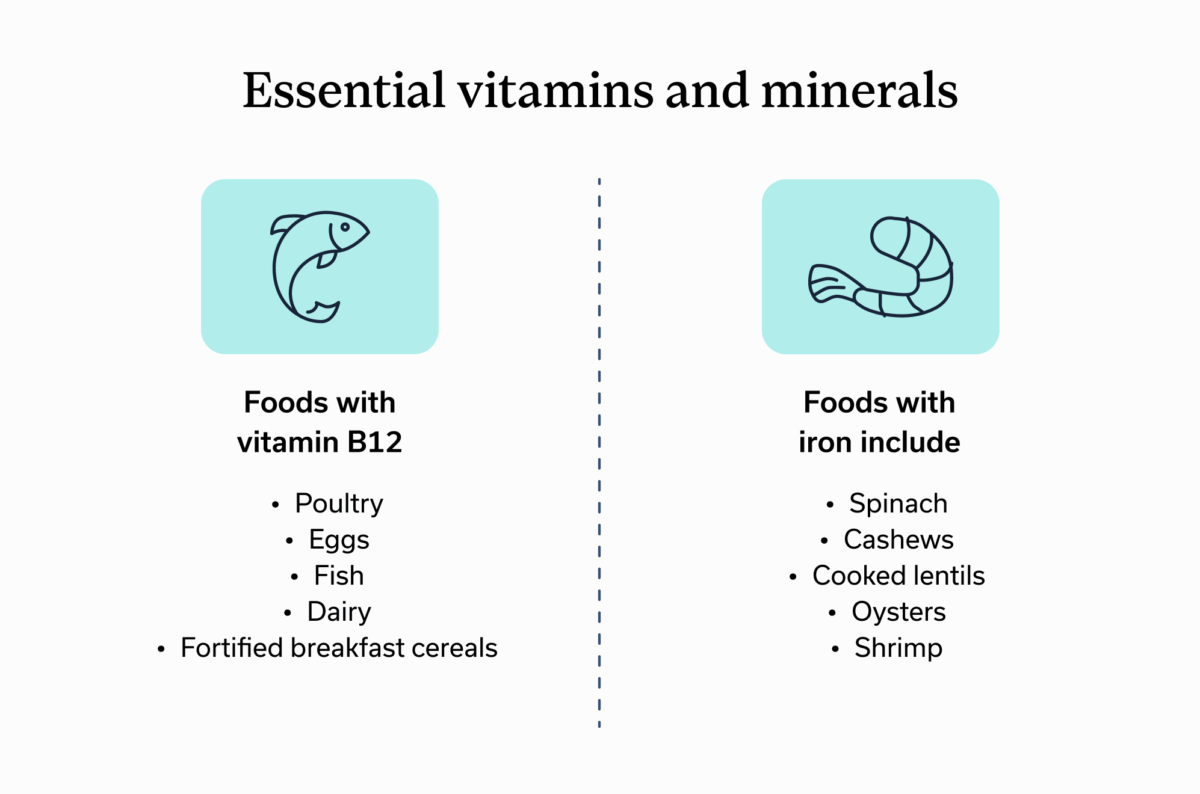
Vitamin B12 is often found in animal products, including poultry, eggs, fish, and dairy. For those who avoid animal products, fret not: Some fortified breakfast cereals have vitamin B12 as well, and supplements are available if your health care provider recommends you add one.
Foods with iron include:
- Artichokes
- Baked potato with skin
- Cashews
- Cooked black beans
- Cooked green peas
- Cooked lentils
- Cooked sweet potatoes
- Duck breast
- Lamb
- Lima beans
- Oyster
- Sesame seeds
- Shrimp
- Spinach
Foods (and other things) to avoid with gastritis
The good news about a gastritis diet? It can and should be a delicious and healthy diet overall, and you can still enjoy many of your favorite foods. The foods to avoid with gastritis are those that are best enjoyed in moderation, period—regardless of whether you have a GI condition or not.
Caffeinated beverages, full-fat dairy, and chocolate
Coffee, energy drinks, and other caffeinated beverages and foods can irritate your stomach lining, making symptoms worse. Candies, cocoa, chocolate desserts, whole milk, and ice cream may also irritate your stomach lining, says Mayo.
“Tiramisu would be a definite no-go,” Mayo adds, highlighting that the dessert has both coffee and chocolate (and, in some recipes, alcohol).
Fried, fatty, and processed foods
“High fat and fried foods such as hot dogs, fries, pizza, bacon, and other processed meats should be avoided,” says Mayo. When gastritis symptoms flare, these heavily processed foods can make symptoms worse and don’t provide essential nutrients.
Spicy and acidic foods
Spicy foods, such as chili powder, black pepper, and red pepper are known culprits for aggravating an inflamed stomach lining.
“Other foods to avoid include acidic foods,” explains Mayo, “such as oranges, grapefruit, pineapple, tomatoes and juices—and meals made from these foods.”
Smoking and alcohol
Heavy drinking is a known cause of gastritis. Alcohol (of any quantity) can irritate current cases of gastritis, as can smoking. Avoid both during gastritis flares.
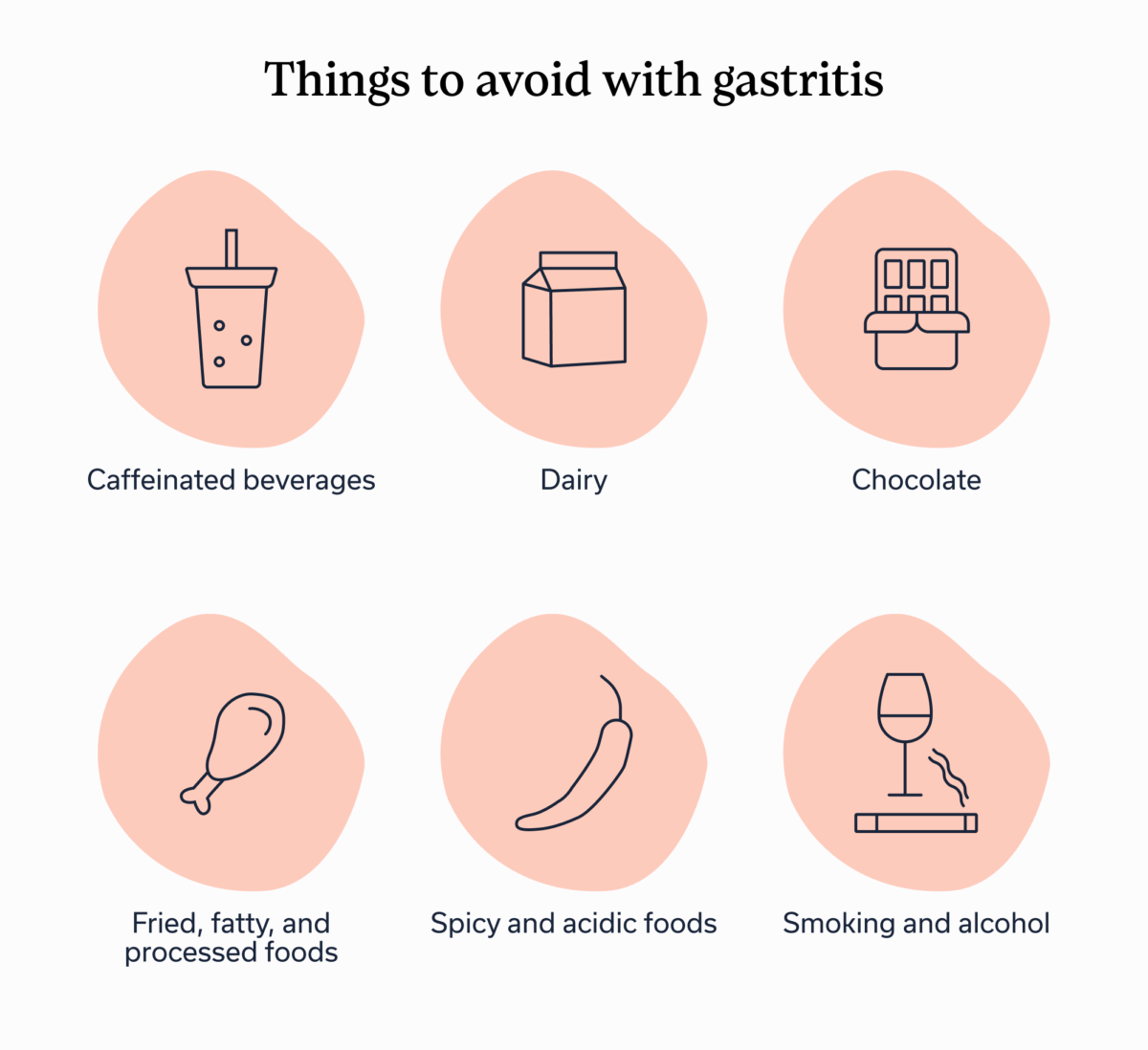
Meal timing and eating habits
Following a gastritis diet isn’t just about what you eat but how and when you eat. In one study polling people with gastritis, 53% reported that eating too fast led to more bloating and belching, two symptoms of gastritis. Eating slowly and chewing and swallowing each bite before taking another may help relieve these symptoms and aid the digestive process as a whole.
That same study found infrequent meals and large meal sizes also made symptoms worse. When following a gastritis diet, pay attention to portion sizes and consider eating breakfast, lunch, dinner, and any snacks around the same time each day. You could even schedule those times into your calendar as a helpful reminder.

Sample daily meal plan for gastritis
Getting stuck with a grumbling stomach—and no idea what to eat—is only going to make gastritis matters worse. Planning your meals in advance can make cooking and prioritizing nutrient-dense foods a bit easier. If you are following a gastritis diet, plan to include those easily digestible foods with the right nutrients—and avoid foods that trigger your symptoms.
Of course, trigger foods will be unique and different for each individual. That said, Mayo provided a sample daily meal plan that may work for many people struggling with gastritis:
- Breakfast: Oatmeal with almond butter, bananas, and cinnamon with a splash of plant-based milk
- Lunch: Turkey meatballs with roasted zucchini and mashed sweet potatoes
- Dinner: Baked white fish with sautéed green beans and rice cooked in bone broth
- Snack: Chia seed pudding
Managing gastritis long-term
While the right diet can help relieve gastritis symptoms, it doesn’t treat the root cause. To do the latter, you’ll need to work with a doctor, ideally a gastrointestinal (GI) provider, who will probably take a screen-and-treat approach.
With this method, a GI provider starts by screening for H. pylori. If the bacteria is present, the clinician may recommend antibiotics or another medication to get rid of it. If the bacteria is not present, they’ll screen for other potential causes, like medication overuse or alcohol consumption. Once that other cause is found, they’ll create a tailored treatment plan, which may include modifying or stopping medications and will likely include implementing certain lifestyle changes.
Gastritis isn’t always an easy condition to diagnose and treat, since symptoms, triggers, and approaches can vary so much from person to person. That’s why it’s important to work with a GI provider and/or dietitian who takes a whole-person approach and has expertise in treating gastritis.
Key takeaways
- Gastritis, inflammation of the stomach lining, may cause uncomfortable symptoms, such as nausea, bloating, heartburn, or pain in your upper abdomen.
- A gastritis diet can help soothe inflammation and relieve symptoms. When following this diet, opt for easy-to-digest carbs, cooked vegetables, lean protein, and sources of vitamin B12 and iron. When possible, avoid fatty or processed foods, caffeine, and acidic or spicy foods.
- While nutrition can help relieve gastritis symptoms, it can’t treat the root cause. To do the latter, work with a GI provider who takes a whole-person to gastritis, such as the team at Oshi Health.
Frequently asked questions (FAQs)
-
When you’re experiencing gastritis, opt for easily digestible carbs, cooked vegetables, lean proteins, and soothing beverages and liquids. Since this GI condition can mean the body doesn’t get as many essential nutrients via stomach lining absorption, add vitamin B12 and iron when possible.
-
If you’re experiencing gastritis symptoms, avoid alcohol, fatty or processed foods, sugars, and caffeine. Acidic and spicy foods may also trigger symptoms.
-
Eating easily digestible foods such as chicken broth and applesauce may help soothe gastritis symptoms. Depending on the condition’s cause, your doctor may recommend a round of antibiotics or adjusting your current medications.
-
Some people with gastritis may be able to eat a salad without discomfort. However, raw vegetables like lettuce or kale are harder to digest than cooked veggies, which means many salads are not always great options for people with gastritis.
Oshi is your partner in digestive health
Feel like your digestive concerns are running your life? You’re not alone—and we’re here to help you find lasting relief.
Oshi Health GI providers, gut-brain specialists, and registered dietitians work together to address the root cause of your symptoms and find solutions that actually work for you.
Whether you’re dealing with chronic digestive issues or unpredictable symptom flare-ups, our GI specialists deliver:
✔ Personalized care plans tailored to your lifestyle
✔ Science-backed strategies to calm your gut
✔ Compassionate, whole-person care
✔ And so much more!
Ready to take control of your gut health?



